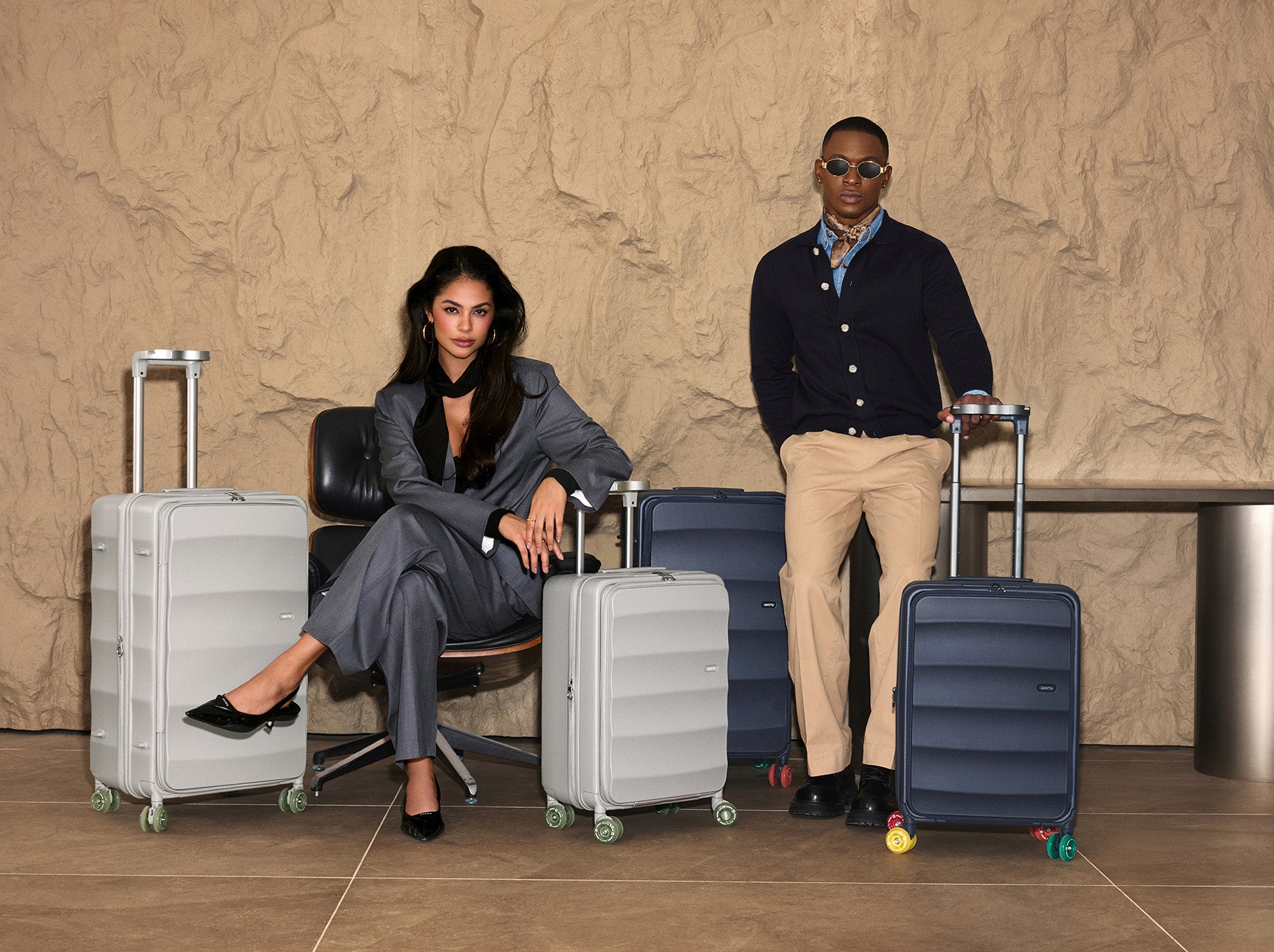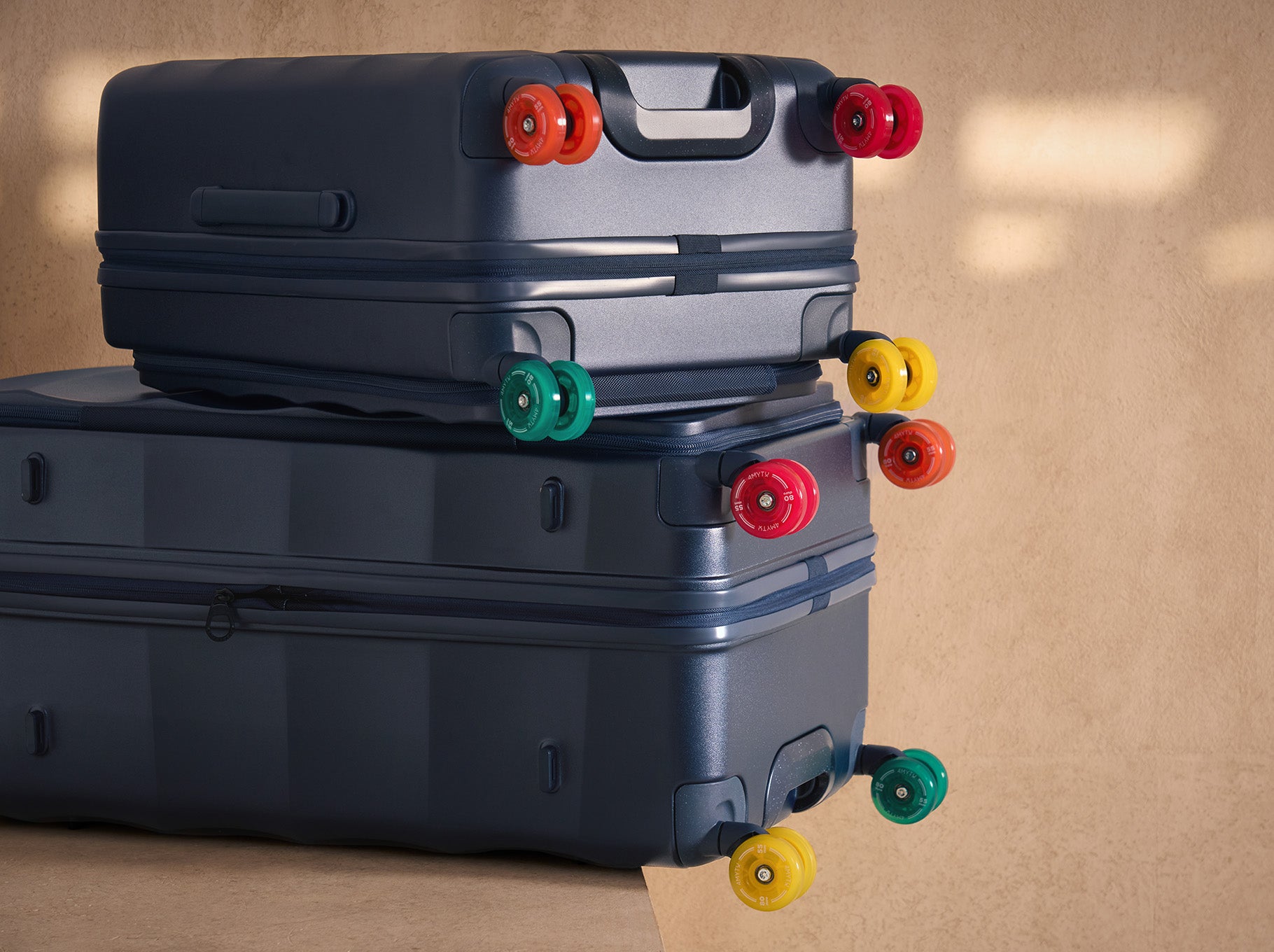
Stress-Free Family Travel: 6 Essential Tips for Traveling With Kids
Traveling as a family doesn’t have to be a test of patience. With the right preparation and mindset, even trips with toddlers and teens can feel smooth and enjoyable.
The Challenges of Family Travel
Every parent has felt it—that small wave of anxiety before a trip with children.
- Will they sleep on the plane?
- Will the stroller fit?
- Did I forget the baby’s snack cup?
Family travel comes with layers of logistics that solo travel doesn’t. Some challenges include:
- Packing for multiple age groups
- Keeping kids entertained in tight spaces
- Managing airport chaos and security
- Avoiding last-minute stress at boarding gates
- Navigating new places with tired kids in tow
With clear plans and tools that work, each challenge would become more manageable. In the following sections, you'll get to know 6 tips on traveling with kids
Tip 1. Embrace the Early Bird Mentality
Early starts can seem tough, but they offer major benefits. Fewer people, calmer kids, and smoother transitions often come with morning travel.
- Choose morning flights when possible
- Pack bags the night before
- Pre-load digital tickets to your phone
- Give kids a quick breakfast before leaving home
A quieter airport environment helps ease kids into travel mode. You’ll avoid crowds, long lines, and the stress of racing against time.
Tip 2. Pack Smart, Not More – Your Luggage Matters
Overpacking adds weight, cost, and confusion. A smarter approach is to pack only what’s necessary—and organize it well.
What to Bring for Kids
Infants (0–2 Years)
Infants need frequent clothing changes and specific care items.
Warm Weather:
- 3 to 4 lightweight bodysuits per day
- 1 sunhat with soft brim
- 1 light swaddle or sleep sack
- 1 pair of breathable booties
Cold Weather:
- 2 to 3 long-sleeve bodysuits per day
- 1 fleece zip-up onesie
- 1 insulated jacket or bunting
- Cotton mittens and a soft beanie
Essentials:
- 6 to 8 diapers per day
- Wet wipes, cream, and changing pads
- Pacifier with clip
- Nursing cover or formula supplies
- Compact stroller or carrier
Toddlers (2–4 Years)
Toddlers are active and prone to spills. Their clothes should be easy to change.
Warm Weather:
- 2 outfits per day (shorts, T-shirts, dresses)
- 1 extra set for travel day
- Sandals with back straps
- Swimwear and water shoes
Cold Weather:
- 2 sets of thermal tops and bottoms
- 1 insulated coat
- Gloves, scarf, and beanie
- Waterproof boots
Essentials:
- Pull-ups or training pants
- Favorite blanket or plush toy
- Snack containers with locks
- Refillable toddler water bottle
- Toy for waiting times (small puzzle, board book)
Children (5–9 Years)
This age group can carry small bags and choose clothes with some independence.
Warm Weather:
- 1 outfit per day, plus one extra
- Lightweight jacket for evening
- Cap or sun visor
- Swimwear and quick-dry towel
Cold Weather:
- 1 set of thermal wear
- 1 heavy coat or parka
- Wool socks, scarf, and gloves
- Indoor shoes or slippers for hotel stays
Essentials:
- Tablet or e-reader with games or books
- Personal backpack
- Reusable water bottle
- Drawing pad or travel-friendly game
- Flashlight for fun or emergencies
Pre-Teens (10–13 Years)
Older children often want their own space and independence. Encourage them to help pack.
Warm Weather:
- 1 outfit per day
- Breathable fabric tops and shorts
- Swimsuit and sunglasses
- Packable sunhat or cap
Cold Weather:
- Layered clothing system (thermal base, fleece, outer shell)
- Padded gloves and scarf
- Hiking or insulated boots
- Light pajamas for hotel heating
Essentials:
- Phone, charger, and power bank
- Toiletries in travel-size bottles
- Notebook or trip journal
- Headphones with noise control
- ID bracelet or card with emergency contact
Why the Right Luggage Helps
The 4MYTU Tank Carry-On Luggage is designed for families who need quick access and stable mobility.
- Front-opening design for easy access on planes or in cars
- Multiple compartments, including a leak-proof layer for toiletries or baby bottles
- TSA combination lock for added security during flights
- Expandable storage—add up to 35% more space when needed
- 360° skateboard wheels for smooth movement, even with 200KG of weight
- Noise-reducing PU coating to keep airport movement quiet
- Patented multifunction handle, with built-in cup holder, bag hook, and phone stand.
The details support fast, organized packing and calm transitions during stressful moments.
Tip 3. Keep Them Entertained and Comfortable on the Go
When boredom hits, stress follows. Kids trapped in seats or stuck in airports need stimulation and comfort.
Entertainment Kit Ideas:
- Sticker books or reusable activity pads
- Age-appropriate games or puzzle apps
- Headphones and kid-safe playlists
- Magnetic drawing boards
- Window clings for plane or car use
- Surprise snack bags (wrapped in gift paper for fun)
Comfort Checklist:
| Comfort Item | Reason |
| Neck pillow | Helps naps during transport |
| Blanket or oversized scarf | Comforts and keeps kids warm |
| Soft socks | Keeps them cozy on cold flights |
| Kid-friendly sanitizer | Encourages hand hygiene |
Rotating activities every 30–45 minutes helps avoid meltdowns. Try mixing screen time with games or stories.
Tip 4. Navigate Airports and Security Like a Pro
Airport stress usually peaks during check-in and security. With kids, things slow down even more—unless you prepare ahead.
Pre-Travel Tips:
- Check seat assignments early to avoid separation
- Print backup boarding passes, just in case
- Dress kids in easy-to-remove layers
- Use a small crossbody bag for essentials like IDs, documents, and wipes
Gear Tip:
A carry-on like 4MYTU Tank Carry-On supports fast airport movement with its:
- Detachable wheels, allowing for quick swaps if damaged
- Dual anti-theft zippers to reduce loss risks
- Strong PC shell, resistant to impact and rough handling
- Five-stage adjustable handle, ideal for taller parents
- GRS-certified eco-lining, made from 15 recycled bottles
- Quick access pockets and smooth movement help you glide past obstacles while keeping kids in sight.
Tip 5. Embrace Flexibility – The Secret Weapon for Stress-Free Trips
Plans will change. Kids will get tired at odd times. Flights may be late. Restaurants may be too loud or too spicy. Families that expect changes tend to enjoy their trips more.
Stay Flexible:
- Leave breathing room between activities. Avoid stacking too many events back-to-back. If a museum visit ends later than expected or your child gets absorbed in feeding ducks at a park, you won’t need to rush to the next place.
- Prioritize rest, not just movement. Build in quiet time daily, even if it’s only 30 minutes in the hotel room. A short nap, a slow lunch, or downtime with a coloring book can reset everyone’s energy.
- Choose accommodations that support change. Hotels or rentals with late check-out or early check-in options are useful when flights don’t line up with nap times or check-in hours. Some family-friendly hotels also offer common areas, kid zones, or 24-hour lobbies where you can wait comfortably.
- Create a list of backup options. Keep a short list of “low-energy” activities in your phone—indoor playgrounds, quiet bookstores, local parks with shade. If weather shifts or your main plan falls through, you won’t feel lost.
- Let kids help guide the pace. Observe when they’re slowing down. Maybe it’s a snack they need, not a change in scenery. Allow extra time for transitions—like leaving the pool or getting dressed in the morning—without rushing.
Build your schedule around energy levels and moods. You’ll gain more joy from small wins than packed plans.
Tip 6. Involve Your Kids and Make it an Adventure
Kids are more than just along for the ride. When given the chance, they can take on real roles during a trip. They can help, observe, notice details, and even lead in small ways. When they feel included, they act differently. Complaints often drop. Cooperation grows. The trip becomes something they remember not just for where you went, but for how they helped shape it.
Giving children small, age-appropriate tasks builds their confidence. A young child might choose snacks for the day. An older one might track your route or find signs in the airport. These roles don’t need to be big. They only need to feel real.
Involvement makes the trip theirs, too. Whether they call out the train stop, carry their own bag, or write down funny moments from the day, they start to take pride in the journey. That feeling turns everyday travel into an adventure worth telling.
What Kids Can Do at Each Age
-
3–5 Years Old
- Try: Pick a snack, carry a light backpack, help tidy the hotel desk
- Good for: Early decision-making and a sense of care
-
6–9 Years Old
- Do: Use a packing list, find signs in the terminal, check boarding passes
- Great for: Independence and attention to detail
-
10–13 Years Old
- Try: Choose outings, read transit maps, explore basic translation apps
- Best for: Planning skills and tech awareness
Simple Ways to Involve Them
- Let them pick between two parks, two snacks, or two walking routes.
- Rotate small daily duties. One child checks the weather. Another tracks the distance to your next stop.
- Encourage them to document the journey: write short journal notes, take pictures, or draw what they see.
- Put tools in their hands. A physical map, a travel checklist, or even a child-friendly camera gives them something to focus on.
- Use downtime wisely. Play travel games like “I Spy,” run mini scavenger hunts, or count flags, languages, or license plates.
What Lasts Longer Than the Trip
Every journey ia a family story. Not just about the place, but the people, the laughter, and the teamwork. Kids may forget the name of the museum. But they will remember carrying their own bag, choosing a trail, or spotting your hotel from a bus window. These moments stay long after the luggage is unpacked.





Leave a comment
This site is protected by hCaptcha and the hCaptcha Privacy Policy and Terms of Service apply.